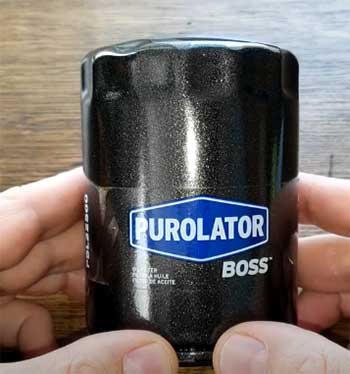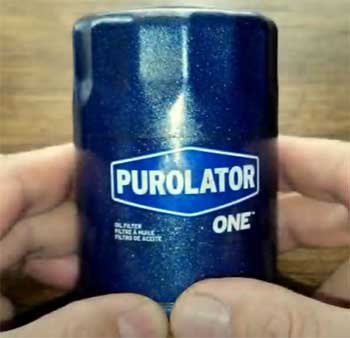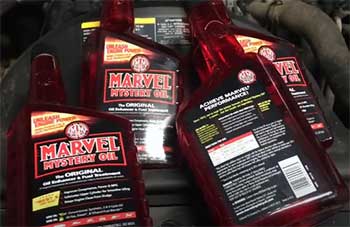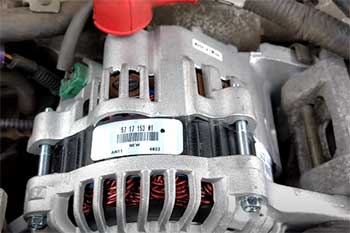As a car enthusiast who’s turned countless wrenches, I know picking the right oil filter is a big deal. Your engine’s life depends on it. Today, I’m putting Purolator’s Boss and One oil filters head-to-head to help you decide which suits your ride.
From filtration efficiency to durability, I’ll break down their features, pros, and cons with a real-world lens. By the end, you’ll have a clear picture of which filter keeps your engine humming.
Let’s get started with a quick comparison table to set the stage.
A Brief Comparison Table
| Feature | Purolator Boss | Purolator One |
| Filtration Efficiency | 99% at 25 microns | 99% at 20 microns |
| Mileage Rating | Up to 20,000 miles | Up to 10,000 miles |
| Media Type | Full synthetic (SmartFUSION) | Synthetic blend |
| Anti-Drainback Valve | Silicone | Silicone |
| Gasket Material | PuroSEAL ethylene-acrylic | Standard |
| Casing | Heavy-duty steel | Standard steel |
| Best For | Extreme conditions, synthetic oil | Everyday driving, all oil types |
| Price (Approx.) | $12–$18 | $7–$12 |
My Journey With Oil Filters
I’ve been changing my own oil since I was 16, starting with my beat-up ’98 Civic. Back then, I grabbed whatever filter was cheapest at the auto parts store. But after a few engines started knocking earlier than they should’ve, I learned the hard way: not all oil filters are created equal.
Purolator’s been a name I’ve trusted for years, and their Boss and One filters are two of their heavy hitters. I’ve used both on my vehicles—a 2015 F-150 for towing and a 2020 Corolla for daily commutes—so I’m sharing my firsthand experience to help you choose.
What Makes Purolator Stand Out?

Purolator’s been in the game since inventing the first automotive oil filter in the 1920s.
That’s a century of know-how.
Both the Boss and One come from their stable, built by Mann+Hummel, a filtration giant.
They’re designed to keep your engine’s oil clean, but they cater to different drivers.
The Boss is the premium choice, packed with high-end features for tough conditions.
The One is the reliable middle ground, balancing cost and performance.
Let’s break down their key features before we weigh the pros and cons.
Key Features of Purolator Boss
The Purolator Boss is like the tank of oil filters. It’s built to handle the worst driving scenarios—think towing a trailer through a desert or idling in city traffic during a heatwave. Here’s what it brings to the table:
- SmartFUSION Synthetic Media: This full-synthetic filter media traps 99% of contaminants down to 25 microns. It’s wire-backed for extra strength, so it won’t tear under pressure.
- 20,000-Mile Rating: Designed for extended oil change intervals, it’s a match for full-synthetic oils that last longer.
- PuroSEAL Gasket: Made from ethylene-acrylic, this gasket resists leaks better than standard rubber, especially in extreme temperatures.
- Double-Helix Center Tube: This unique design boosts oil flow while keeping the filter structurally sound.
- Heavy-Duty Steel Casing: The thick steel shell and base plate laugh off high pressures and rough handling.
- Silicone Anti-Drainback Valve: Prevents dry starts by keeping oil in the filter when the engine’s off, even after long periods.
I’ve used the Boss on my F-150 during summer towing trips, and it’s held up beautifully. After 12,000 miles, I cut one open (a mechanic’s guilty pleasure) and found it still trapping dirt without clogging.
Key Features of Purolator One
The Purolator One is the everyman’s filter—reliable, affordable, and versatile. It’s what I slap on my Corolla for my 30-mile daily commute. Here’s its lineup:

- Synthetic Blend Media: A mix of synthetic and cellulose fibers, it catches 99% of particles at 20 microns. It’s not wire-backed like the Boss but still tough.
- 10,000-Mile Rating: Perfect for standard oil change intervals, whether you’re using conventional, semi-synthetic, or full-synthetic oil.
- Silicone Anti-Drainback Valve: Like the Boss, it prevents dry starts, which is great for cars that sit for a few days.
- Standard Steel Casing: Not as beefy as the Boss, but it’s solid for everyday driving.
- High-Density Media: The multi-fiber design balances filtration and flow, so your engine gets clean oil without starving.
On my Corolla, the One’s been a champ. I change it every 7,500 miles with synthetic oil, and my engine’s as smooth as the day I bought it.
Pros of Purolator Boss
The Boss is a beast, and here’s why I love it for heavy-duty use:
- Top-Tier Filtration: That 99% efficiency at 25 microns means it’s grabbing nearly every speck of dirt. For synthetic oil users, it’s a perfect pairing.
- Longevity: Rated for 20,000 miles, it’s ideal if you’re stretching oil changes (with high-quality synthetic oil, of course). I’ve pushed it to 15,000 miles towing without issues.
- Built Like a Tank: The steel casing and double-helix tube make it nearly indestructible. It’s survived my F-150’s brutal towing sessions in 100°F heat.
- Leak-Proof Gasket: The PuroSEAL gasket is a game-changer. I’ve never had a leak, even when I accidentally over-tightened it.
- Extreme Condition Ready: Whether you’re off-roading, hauling, or stuck in stop-and-go traffic, the Boss thrives where lesser filters choke.
Cons of Purolator Boss
No filter’s perfect, and the Boss has a few quirks:
- Pricey: At $12–$18, it’s not cheap. If you’re not using synthetic oil or driving hard, it might be overkill.
- Slightly Restrictive Flow: The dense synthetic media can slow oil flow slightly compared to less efficient filters. Not a dealbreaker for most engines, but high-performance cars might notice.
- Tough to Remove: That thick steel casing? It’s a pain to grip without a good wrench, especially if it’s overtightened.
- Overkill for Light Duty: If you’re just commuting in a sedan, the Boss’s extra features might not justify the cost.
I noticed the flow issue when I tried the Boss on a friend’s Civic Si. The high-revving engine didn’t love the slight restriction, so we switched to a One.
Pros of Purolator One
The One’s a crowd-pleaser, and here’s why it’s my go-to for daily drivers:
- Great Value: At $7–$12, it delivers premium filtration without breaking the bank. I’ve bought them in bulk during sales.
- Fine Filtration: Catching 99% at 20 microns is better than many competitors. It’s kept my Corolla’s oil clean through 50,000 miles.
- Versatile: Works with any oil type and driving style. I’ve used it with semi-synthetic and full-synthetic oils, and it’s never let me down.
- Easy to Install: The standard casing is grippy and easy to hand-tighten. No wrestling required.
- Reliable for Everyday Use: From city commutes to highway cruises, the One handles it all without fuss.
Cons of Purolator One
The One’s not flawless, though:
- Shorter Lifespan: Rated for 10,000 miles, it’s half the Boss’s endurance. If you’re extending oil changes, you’ll need to swap it sooner.
- Less Durable Media: The synthetic blend isn’t as tough as the Boss’s full synthetic. It’s fine for normal driving but might struggle with extreme conditions.
- Standard Gasket: It’s not as leak-resistant as the Boss’s PuroSEAL. I’ve had one minor seep when I didn’t clean the mounting surface well.
- Not for Heavy Duty: Towing or off-roading? The One’s not built for that. It clogged faster when I tried it on my F-150 during a heavy towing month.
Also Read: Differences Between FRAM Tough Guard And Ultra Synthetic Oil Filters.
My Real-World Testing

To get a feel for these filters, I ran them through their paces.
On my F-150, I used the Boss for a 15,000-mile stretch, towing a 5,000-pound trailer across state lines.
The oil stayed clean, and when I cut the filter open, the media was intact, holding a ton of dirt without tearing.
The Corolla got the One for 7,500-mile intervals over a year of city driving.
The oil looked golden at each change, and the filter’s media was still in great shape.
I also talked to a buddy who runs a repair shop. He’s seen both filters in action across dozens of vehicles.
His take?
The Boss is overkill for most customers, but it’s a lifesaver for trucks and SUVs in harsh conditions. The One’s his default for sedans and light trucks—cheap, effective, and reliable.
Filtration Vs. Flow of Purolator Boss And One Oil Filters
Let’s get technical for a second. Filtration efficiency is about how much dirt a filter catches at a given particle size. The One’s 99% at 20 microns edges out the Boss’s 99% at 25 microns, meaning it grabs smaller particles.
But here’s the catch: finer filtration can restrict oil flow. The Boss’s full-synthetic media, with its wire backing, balances flow and filtration better for high-pressure scenarios like towing.
Flow matters because your engine needs oil to stay lubricated. Too much restriction, and you risk starving the engine, especially at high RPMs. The Boss’s double-helix center tube helps here, keeping oil moving even under stress.
The One’s simpler design is fine for normal driving but might not keep up in extreme cases.
I found this out the hard way when I used a One on my F-150 during a towing trip. The oil pressure gauge flickered slightly under load, a sign the filter was struggling. Switched to a Boss, and the issue vanished.
Which Filter For Which Driver?
Your driving habits and vehicle type should guide your choice. Here’s my take:
- Choose Purolator Boss If: You drive a truck or SUV, tow heavy loads, off-road, or live in extreme climates. It’s also great for synthetic oil users who extend oil changes to 15,000+ miles. My F-150 loves it.
- Choose Purolator One If: You’ve got a sedan or light truck, commute daily, or stick to standard 5,000–7,500-mile oil changes. It’s perfect for budget-conscious drivers who still want quality. My Corolla thrives on it.
Cost Vs. Value
Price is a big factor. The Boss costs about 50% more than the One, so is it worth it? If you’re pushing your vehicle hard or extending oil changes, absolutely. The Boss’s durability and longer lifespan save you money in the long run by reducing filter changes and protecting your engine.
For casual drivers, the One’s lower price and solid performance make it a no-brainer. I’ve saved a few bucks buying Ones in bulk for my Corolla, but I don’t skimp on the Boss for my F-150.
Installation Tips From Experience
Installing either filter is straightforward, but here’s what I’ve learned:
- Clean the Mounting Surface: A dirty engine block can cause leaks, especially with the One’s standard gasket.
- Pre-Fill the Filter: Pour a bit of new oil into the filter before installing to reduce dry-start time. I do this with both filters.
- Hand-Tighten, Then a Quarter Turn: Over-tightening the Boss’s thick casing makes removal a nightmare. The One’s easier to gauge.
- Use a Quality Wrench: The Boss’s steel casing is slippery. A good oil filter wrench saves knuckles.
Community Feedback
I scoured forums like Bob Is The Oil Guy and Reddit to see what other gearheads think. The consensus? The One’s praised for its bang-for-buck filtration, with many users confirming its 20-micron efficiency holds up in oil analysis tests.
The Boss gets love for its build quality but catches flak for being less efficient than expected (some older specs listed it at 46 microns, though newer ones confirm 25). A few users reported the Boss feeling “too restrictive” for high-performance engines, echoing my Civic Si experience.
Environmental Considerations
Oil filters aren’t exactly eco-friendly, but Purolator’s long-lasting designs help. The Boss’s 20,000-mile rating means fewer filter changes, reducing waste.
The One’s shorter lifespan generates more used filters, but its lower price might encourage regular maintenance, which keeps your engine cleaner and more efficient, indirectly cutting emissions. I recycle my used filters at auto parts stores, and I’d urge you to do the same.
My Final Verdict
After months of testing and years of wrenching, I’m torn but leaning slightly toward the Purolator One for most drivers. Its 20-micron filtration, affordability, and versatility make it a stellar choice for daily commuters like my Corolla.
The Boss, though, is unbeatable for heavy-duty use—my F-150 wouldn’t tow without it. Your choice depends on your vehicle, driving style, and budget. Pick the One for value and reliability, or the Boss for rugged endurance. Either way, you’re getting a filter that’ll keep your engine happy.
Also Read: Differences Between Purolator Boss And Mobil 1 Oil Filters.
Frequently Asked Questions (FAQ)
Mann+Hummel, a global filtration leader, manufactures Purolator One filters.
Purolator Boss filters are made in the USA, often at their Fayetteville, NC facility.
Purolator One is rated for 10,000 miles; Boss for up to 20,000 miles.
Conclusion: Your Engine, Your Choice
You and I both want our engines to last, and choosing between the Purolator Boss and One is a step toward that goal. I’ve laid out their strengths and weaknesses, from the Boss’s tank-like build to the One’s wallet-friendly reliability.
Whether you’re hauling heavy loads or just getting to work, there’s a Purolator filter for you. Think about your driving habits, check your budget, and pick the one that fits. Your engine will thank you with every mile.

